Minesweeper Rules
Every move in Minesweeper is a small puzzle. To avoid mistakes, it’s important to understand how to play the game and also how it works under the hood. Let’s take a closer look at the rules of Minesweeper.
Key Game Elements
On the Minesweeper board, you’ll encounter three key elements:
- Mines – randomly placed on the board and hidden by default. Clicking on a mine immediately ends the game in defeat.
- Numbers – appear on revealed cells and indicate how many mines are hidden in the surrounding cells. These numbers guide you in finding safe moves.
- Flags – allow you to mark cells where you believe mines are located.
Basic Gameplay
- Your first click can be on any cell to reveal what’s underneath.
- The first cell is always safe – you can’t hit a mine on your very first move.
- If a revealed cell contains a number, that number shows how many mines are in the 3–8 surrounding cells (depending on the cell’s position).
- Use the numbers you uncover to logically figure out where the mines are and to safely open other cells.
- You win when all non-mine cells on the board are revealed.
How to Mark Mines
- On Windows, right-click a cell to place a flag. On a MacBook, tap with two fingers on the trackpad.
- On mobile, tap the flag icon after tapping a specific cell to mark it.
Game Controls
Click the smiley face or the "Restart" button in the top left corner of the screen to start a new game at any time.
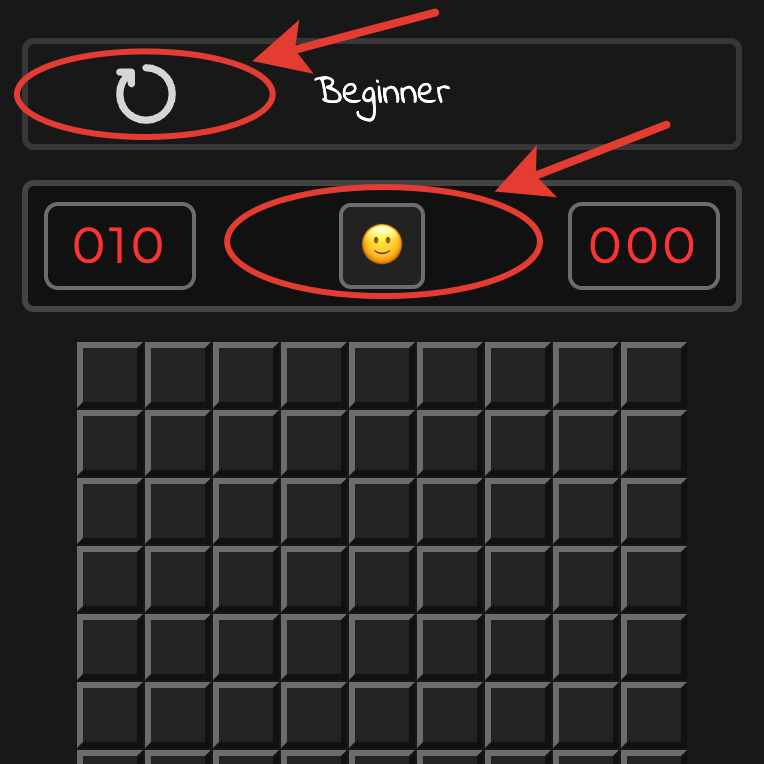
In the top left corner, you’ll see the number of mines hidden on the board for the current game.
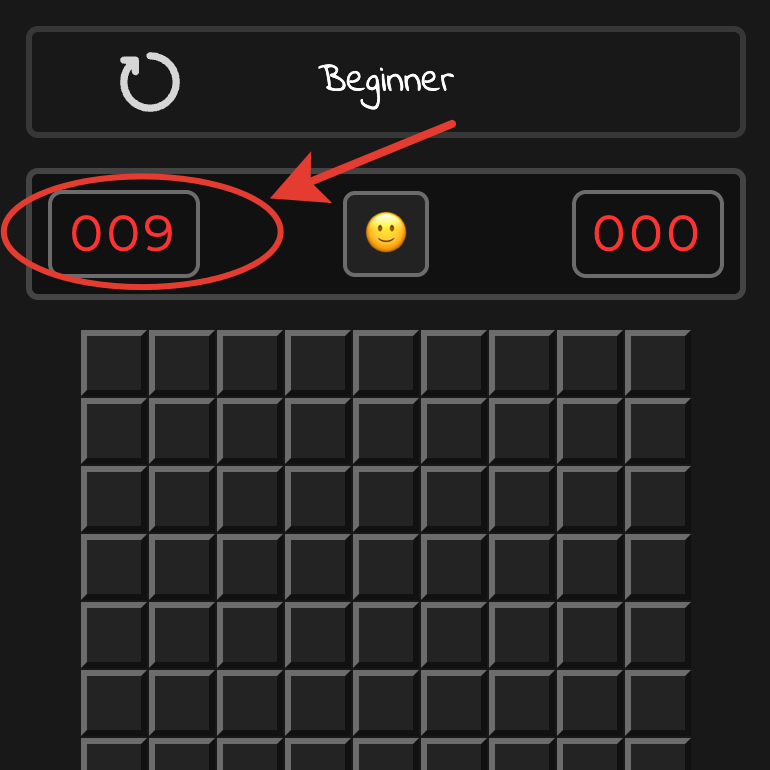
In the top right corner is a timer, counting the seconds. It starts on your first click and stops when the game ends.
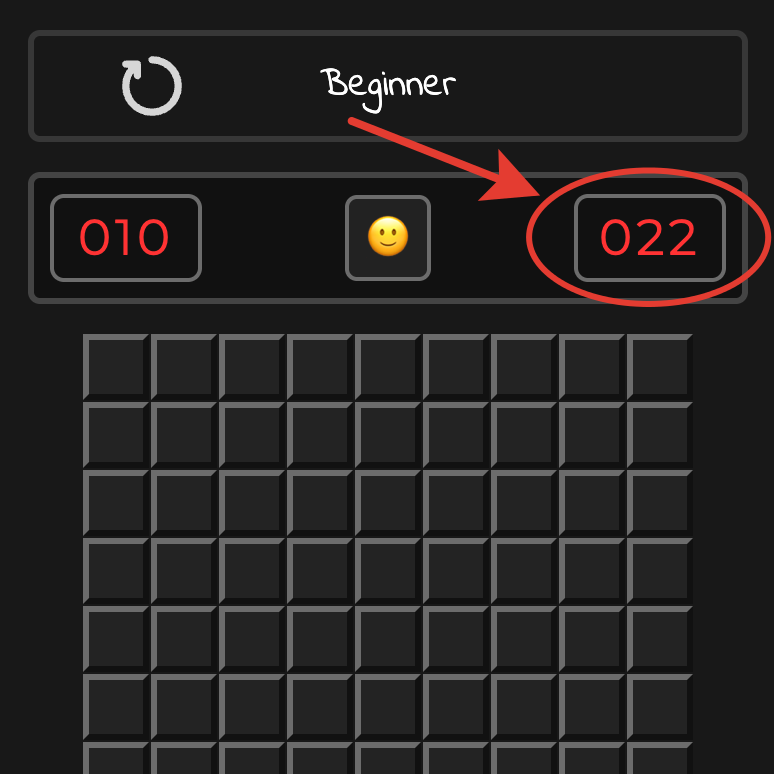
The "Chord" Technique for Faster Gameplay
In the classic version of Minesweeper, there’s a handy technique called the "chord." It’s performed by pressing both the left and right mouse buttons at the same time, or by tapping with two fingers on a MacBook trackpad, on an already revealed numbered cell. If all the mines around that number are correctly flagged, the game will automatically reveal all the surrounding safe cells.
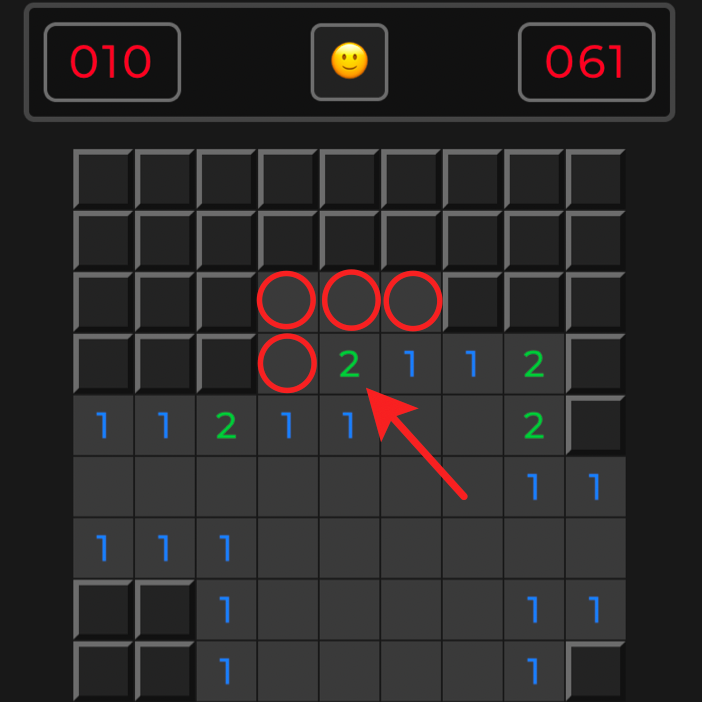
How to use chording:
- Find a revealed numbered cell.
- Place flags on all the cells containing mines around it.
- Press both mouse buttons simultaneously on that cell.
- If the number of flags matches the number on the cell, all surrounding safe cells will be opened automatically.
Difficulty Levels
| Level |
Mines |
Rows |
Columns |
Cells |
| Beginner |
10 |
9 |
9 |
81 |
| Intermediate |
40 |
16 |
16 |
256 |
| Expert |
99 |
30 |
20 |
600 |
To change the difficulty level, click on the name of the current level. For example, to switch from "Beginner" to "Intermediate," click the "Beginner" button.
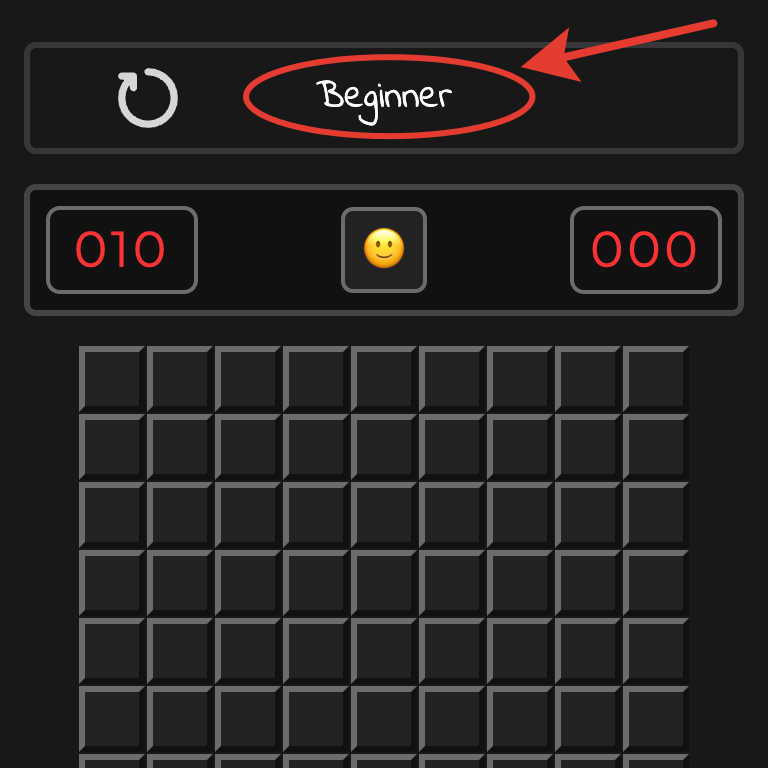
Winning Strategies
- Analyze the numbers. Each revealed number shows how many mines are in the surrounding cells. For example, a "1" means there is exactly one mine in the neighboring cells. Use these clues to figure out safe cells.
- Place flags on suspicious cells. If it’s clear from the surrounding numbers that a mine is in a specific cell, mark it with a flag. This reduces the risk of accidental mistakes and helps you visually track the board.
- Use the elimination strategy. Sometimes you can deduce that the only possible location for a mine is one specific cell. Similarly, if a mine has already been correctly flagged, you can safely open its neighboring cells.
- Open groups of cells. When the correct number of flags is placed around a number, all remaining adjacent cells can be safely opened. This speeds up the game and helps you progress faster.
- Be cautious near the end. The most challenging situations often happen at the end of the game, when choices seem evenly risky. Stay calm, use all available information, and avoid guessing whenever possible.
- You win when all non-mine cells are revealed. You don’t need to flag every mine — just avoid clicking on them while opening safe cells.
From Theory to Practice
We hope that after reading this guide on how to play Minesweeper, you’ll be able to solve even the trickiest puzzles more quickly and easily. Remember: every mistake is a learning experience. Even if you lose, it’s not a reason to be discouraged. In your next game, pay closer attention and you’ll have an even better chance of winning.
Good luck defusing those mines!




